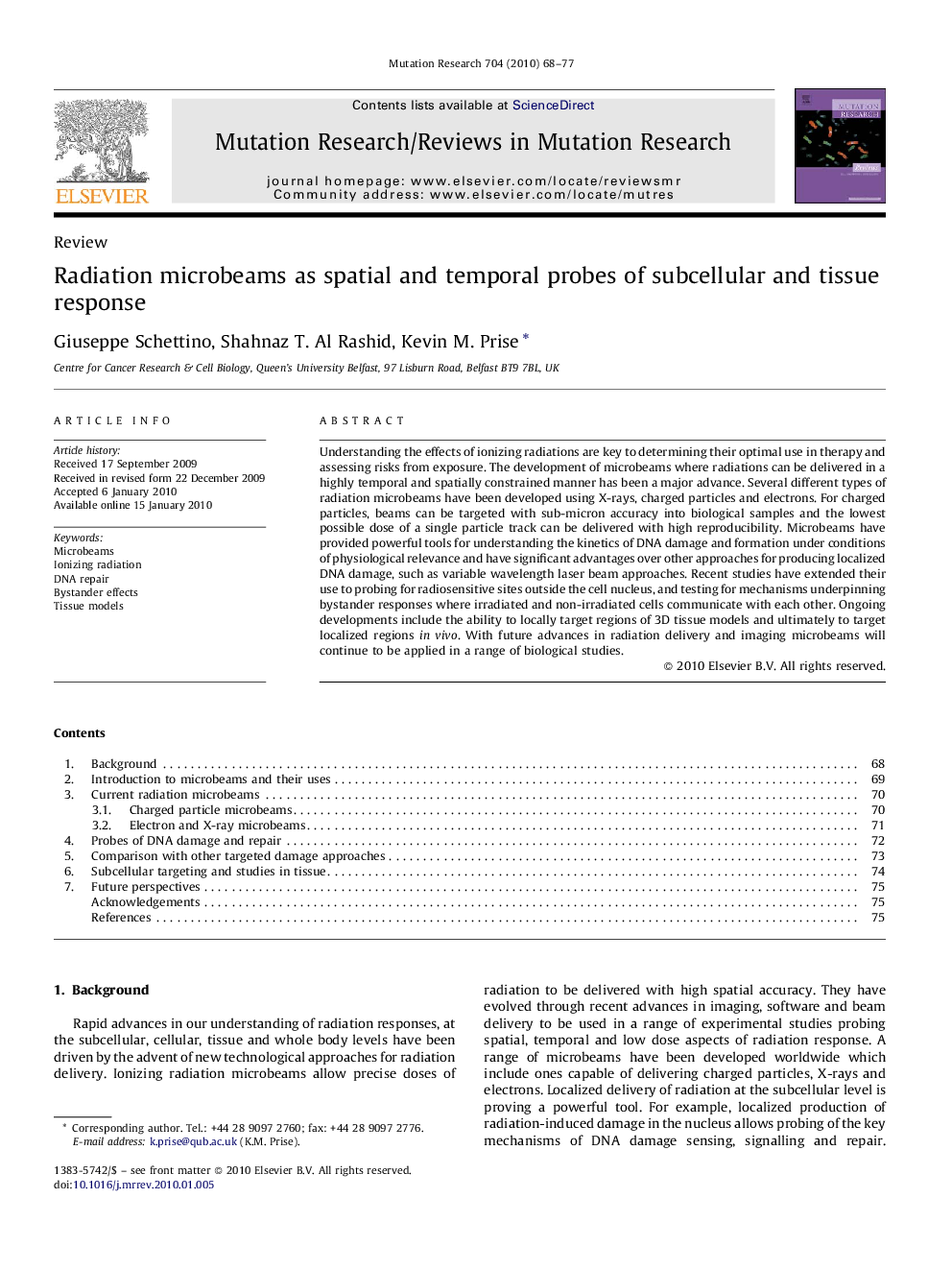| Article ID | Journal | Published Year | Pages | File Type |
|---|---|---|---|---|
| 2149663 | Mutation Research/Reviews in Mutation Research | 2010 | 10 Pages |
Understanding the effects of ionizing radiations are key to determining their optimal use in therapy and assessing risks from exposure. The development of microbeams where radiations can be delivered in a highly temporal and spatially constrained manner has been a major advance. Several different types of radiation microbeams have been developed using X-rays, charged particles and electrons. For charged particles, beams can be targeted with sub-micron accuracy into biological samples and the lowest possible dose of a single particle track can be delivered with high reproducibility. Microbeams have provided powerful tools for understanding the kinetics of DNA damage and formation under conditions of physiological relevance and have significant advantages over other approaches for producing localized DNA damage, such as variable wavelength laser beam approaches. Recent studies have extended their use to probing for radiosensitive sites outside the cell nucleus, and testing for mechanisms underpinning bystander responses where irradiated and non-irradiated cells communicate with each other. Ongoing developments include the ability to locally target regions of 3D tissue models and ultimately to target localized regions in vivo. With future advances in radiation delivery and imaging microbeams will continue to be applied in a range of biological studies.
